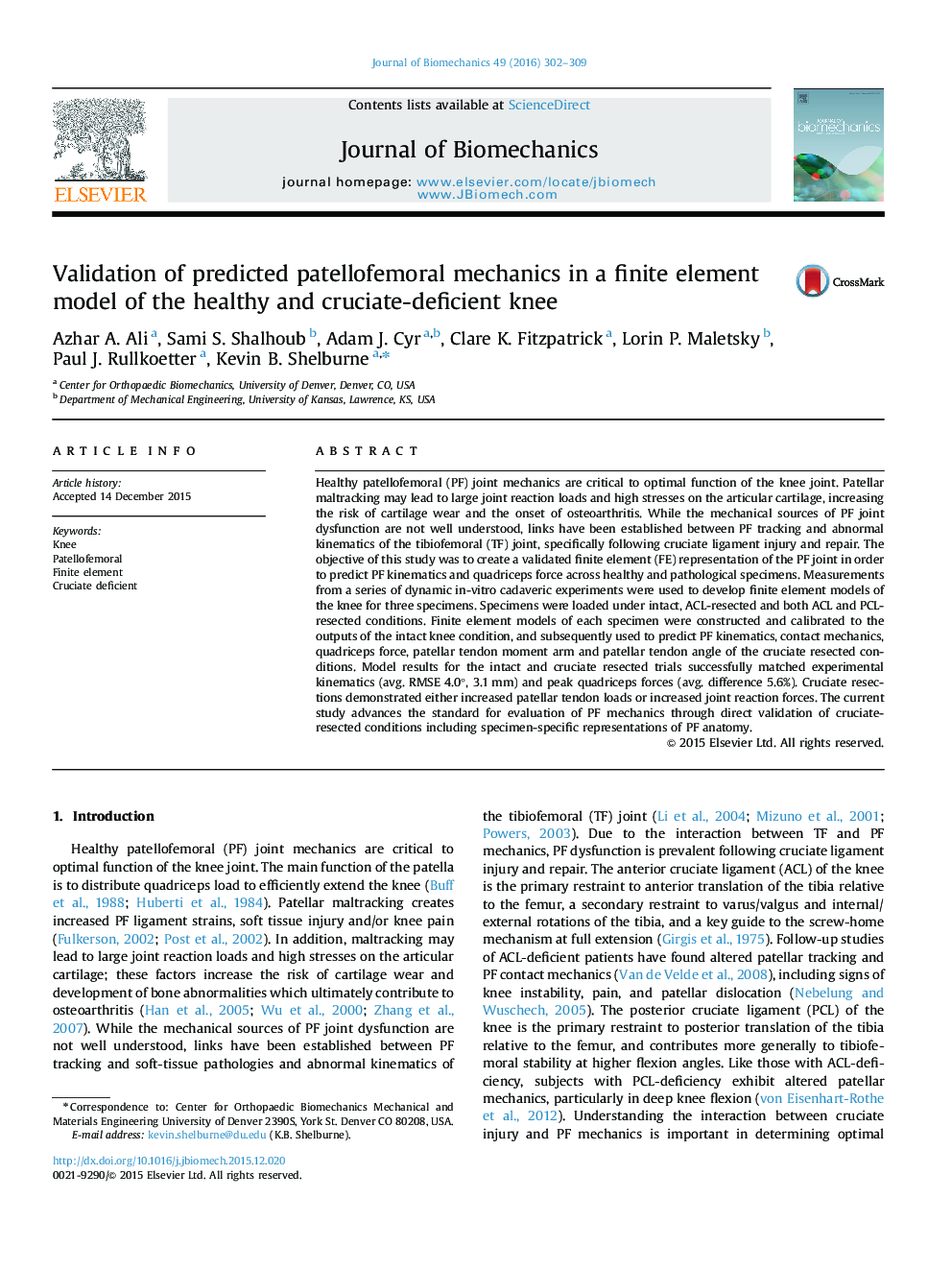| Article ID | Journal | Published Year | Pages | File Type |
|---|---|---|---|---|
| 10431180 | Journal of Biomechanics | 2016 | 8 Pages |
Abstract
Healthy patellofemoral (PF) joint mechanics are critical to optimal function of the knee joint. Patellar maltracking may lead to large joint reaction loads and high stresses on the articular cartilage, increasing the risk of cartilage wear and the onset of osteoarthritis. While the mechanical sources of PF joint dysfunction are not well understood, links have been established between PF tracking and abnormal kinematics of the tibiofemoral (TF) joint, specifically following cruciate ligament injury and repair. The objective of this study was to create a validated finite element (FE) representation of the PF joint in order to predict PF kinematics and quadriceps force across healthy and pathological specimens. Measurements from a series of dynamic in-vitro cadaveric experiments were used to develop finite element models of the knee for three specimens. Specimens were loaded under intact, ACL-resected and both ACL and PCL-resected conditions. Finite element models of each specimen were constructed and calibrated to the outputs of the intact knee condition, and subsequently used to predict PF kinematics, contact mechanics, quadriceps force, patellar tendon moment arm and patellar tendon angle of the cruciate resected conditions. Model results for the intact and cruciate resected trials successfully matched experimental kinematics (avg. RMSE 4.0°, 3.1 mm) and peak quadriceps forces (avg. difference 5.6%). Cruciate resections demonstrated either increased patellar tendon loads or increased joint reaction forces. The current study advances the standard for evaluation of PF mechanics through direct validation of cruciate-resected conditions including specimen-specific representations of PF anatomy.
Keywords
Related Topics
Physical Sciences and Engineering
Engineering
Biomedical Engineering
Authors
Azhar A. Ali, Sami S. Shalhoub, Adam J. Cyr, Clare K. Fitzpatrick, Lorin P. Maletsky, Paul J. Rullkoetter, Kevin B. Shelburne,
